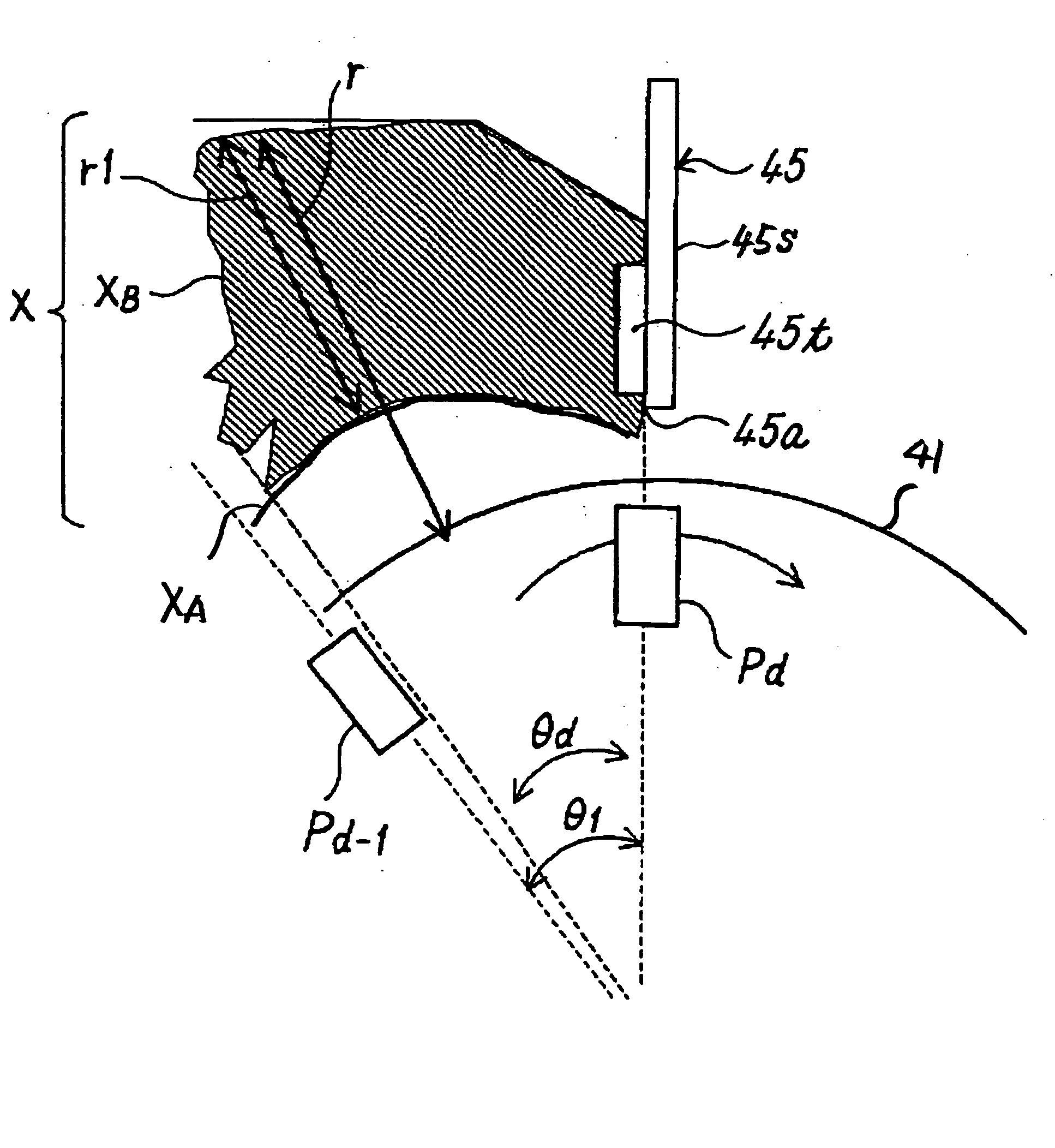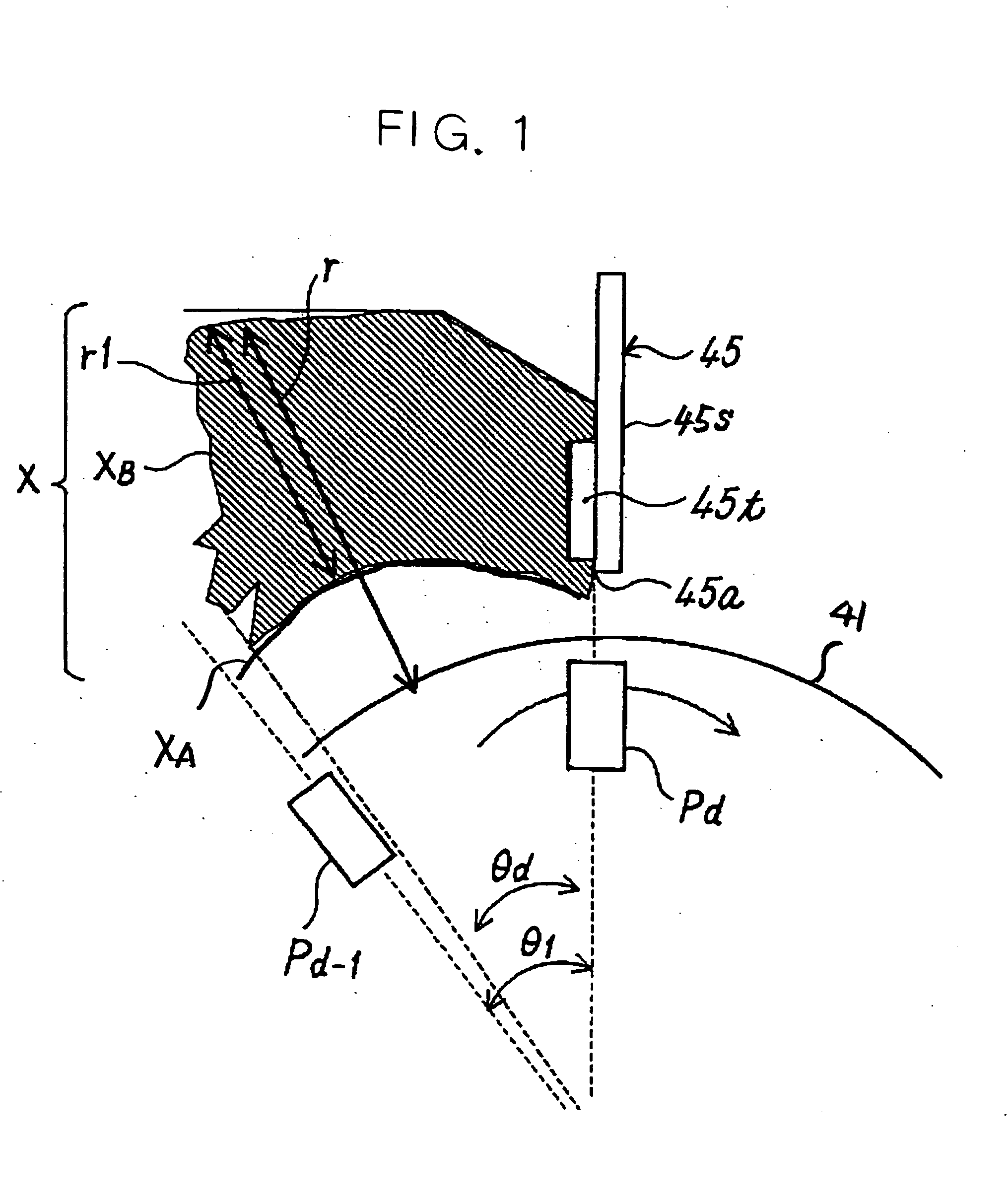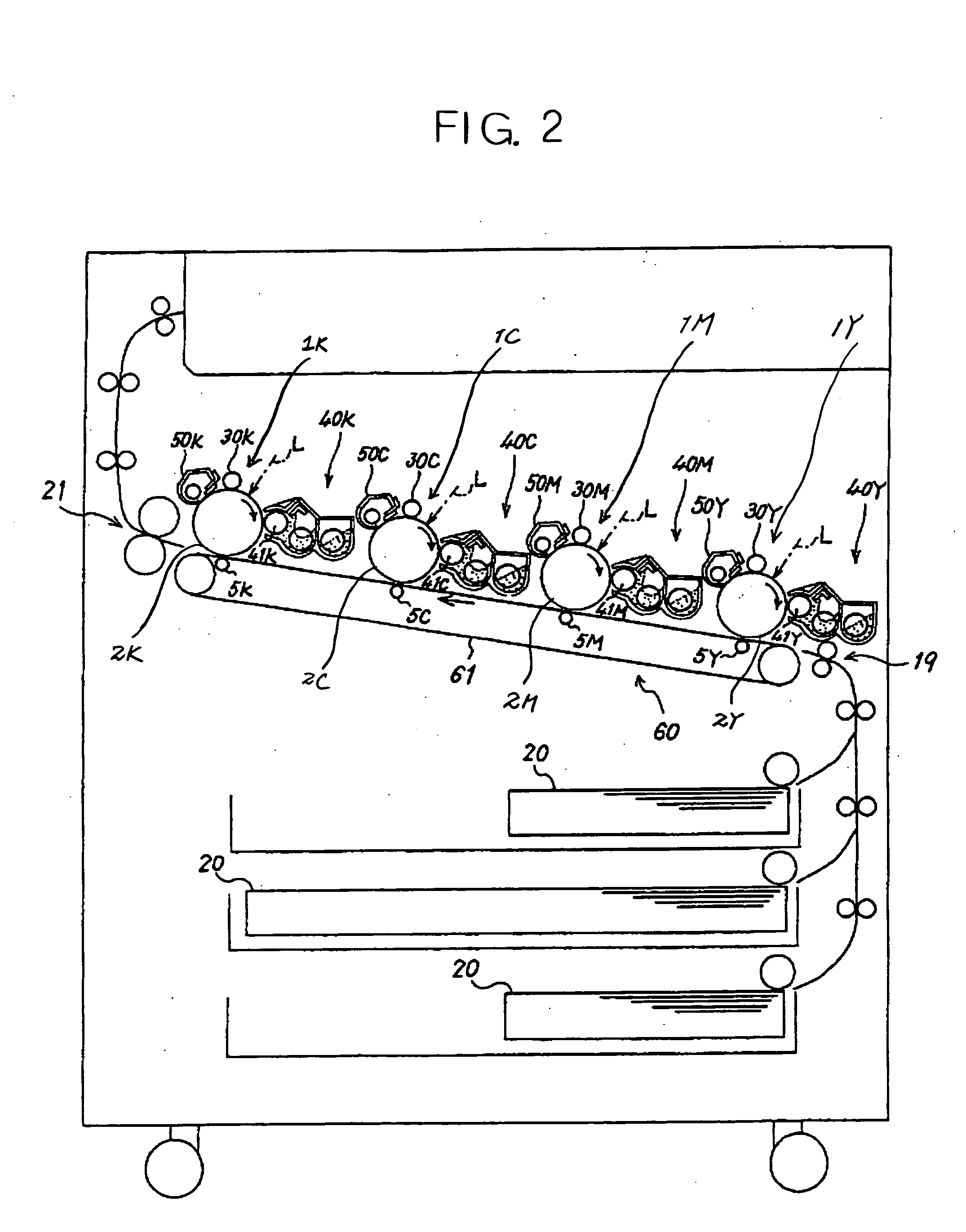Developing device and process cartridge for an image forming apparatus
a development device and development cartridge technology, applied in the field of development devices and process cartridges for image forming apparatuses, can solve the problems of heavy stress on the developer, unstable amount of charge to be deposited on the toner grains, and toner electrostatically deposited
- Summary
- Abstract
- Description
- Claims
- Application Information
AI Technical Summary
Benefits of technology
Problems solved by technology
Method used
Image
Examples
experiment 2
[0116] [Experiment 2]
[0117] The thickness of the stationary layer XB in the radial direction of the sleeve was varied in each of the conventional printer and illustrative embodiment in order to determine how the carrier charging ability CA varied in accordance with the number of sheets output. Experiment 2 differs from Experiment 1 in that the thickness of the stationary layer XB was varied by varying the clearance or distance between the sleeve and the casing C of the developing device.
[0118] FIGS. 12A and 12B each show a particular condition of the stationary layer XB dependent on the clearance between the sleeve 2 and the casing C (casing clearance hereinafter). As shown in FIG. 12A, when the casing C is gently inclined relative to the surface of the sleeve 2 upstream of the doctor 45 such that it leaves the above surface little by little over a substantial distance, the stationary layer XB is thin. By contrast, as shown in FIG. 12B, when the casing C is sharply inclined relative...
second embodiment
[0140] This embodiment is directed toward the second and third objects stated earlier. Reference will be made to FIGS. 15 and 16 for describing an electrophotographic image forming apparatus and a developing device included in the same and using a two-ingredient type developer.
[0141] As shown in FIG. 15, the image forming apparatus includes a charger 30, an exposing unit represented by a laser beam L, a developing device 40, an image transferring device 5 and a cleaning device 50, which are arranged around a photoconductive drum or image carrier 2. A fixing unit 21 fixes a toner image transferred to a sheet or recording medium by the image transferring device 5.
[0142] The drum 2, made up of a hollow core and a photoconductor coated on the core, is caused to rotate in a direction indicated by an arrow in FIG. 15 by a drive mechanism not shown. After the charger 30 has uniformly charged the surface of the drum 2 to a preselected potential, the laser beam L scans the charged surface of...
third embodiment
[0179] This embodiment is directed toward the fourth and fifth objects stated earlier. A developing method unique to the illustrative embodiment will be described first. As for the configuration and operation of a developing device, this embodiment is essentially identical with the first embodiment described with reference to FIGS. 2 through 4 and will therefore be described with reference also made to FIGS. 2 through 4, as needed.
[0180] FIG. 19 shows the condition of a two-component type developer being conveyed via a developing zone in accordance with the illustrative embodiment. FIG. 20 shows the condition of FIG. 19 in the developing zone, as seen from the drum 2 side. The sleeve 41 accommodates the magnet roller not shown, as stated earlier. Labeled C and D are respectively a developing zone and a zone where an apparent coating ratio is measured. The developing zone C refers to a zone where a magnet brush, i.e., brush chains formed by carrier grains contact the drum 1 and cause...
PUM
 Login to View More
Login to View More Abstract
Description
Claims
Application Information
 Login to View More
Login to View More - R&D
- Intellectual Property
- Life Sciences
- Materials
- Tech Scout
- Unparalleled Data Quality
- Higher Quality Content
- 60% Fewer Hallucinations
Browse by: Latest US Patents, China's latest patents, Technical Efficacy Thesaurus, Application Domain, Technology Topic, Popular Technical Reports.
© 2025 PatSnap. All rights reserved.Legal|Privacy policy|Modern Slavery Act Transparency Statement|Sitemap|About US| Contact US: help@patsnap.com



